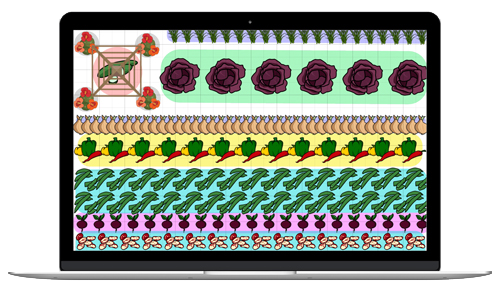
From seed to slaw—your guide to growing crisp, garden-fresh cabbage all season long!
The Almanac Garden Planner - Use It Free for 7 Days!
Plan your 2025 garden with our award-winning Garden Planner.
Types
There’s a fantastic range of cabbage varieties to choose from, offering different shapes, colors, and textures.
- For an early harvest, try ‘Primo’ or ‘Stonehead.’
- Quick-maturing ‘Golden Acre’ and ‘Quick Start’ yield 3-pound heads.
- For Savoy types, try ‘Alcosa’, an early variety, or ‘Wirosa’, a late variety that overwinters as-is in southern gardens but needs protection in the North.
- ‘Early Jersey Wakefield’ resists splitting. It’s an heirloom, slightly pointed, and 2- to 3-pound heads.
- ‘Gonzales’ produces softball-sized heads, making it good for small gardens.
- Disease-resistant varieties include ‘Blue Vantage’ and ‘Cheers’.
- If you are planting for a fall harvest, try red or Chinese cabbage. Good varieties include ‘Integro’ and ‘Ruby Perfection’ (reds) and ‘Li Ren Choy’ (baby bok choy).
Cabbage heads, or hearts, can be rounded or conical, with leaves that are light green, dark green, red, or purple. Red cabbages are popular for braising or pickling.
Some types have a smooth, almost glossy appearance, while others, like the Savoy cabbage, produce deeply crinkled leaves that are perfect for mopping up sauces or gravy.
Cabbages are grouped according to when they’re harvested. Spring cabbages, which may also be harvested young as ‘spring greens,’ are ready from mid to late spring. Summer cabbages crop from summer into early autumn, while fall cabbages and winter varieties cover the remainder of the year.
Savoy cabbages have a long harvest period stretching from autumn all the way through winter to early spring.
Our Garden Planner can show you recommended sowing, transplanting, and harvesting times for different types of cabbage in your location.
Cooking Notes
Fun Tip: If boiling cabbage, drop walnuts (shell on) into the water; they will absorb the cabbage’s unpleasant odor.
ADVERTISEMENT
Grandson received a plant in May from school...obviously should have been in the Fall. It is a large head or some type like that(?) growing well, just starting to form head. Temps up to mid 90's. keeping it in the shade as much as possible. any other tips to keep it healthy? have thought of bringing it inside but then no sun. Right now gets morning sun mainly and some peek through until about noon. assume it will be another 40-60 days before it is finished growing. no bolting seen :) Thank you!
Cabbage is indeed a cool-weather crop usually transplanted after summer heat has passed. Your instinct about shade are correct. You’ll want some kind of shade netting to keep both the soil and air cooler as well as keep the cabbage from being scorched. For best results, suspend the shade netting several inches above the cabbage letting it rest on some kind of frame.If you haven’t done so already, put mulch on the soil to keep it cool. Of course, water to keep the soil from drying out. Cabbage gets thirsty. If it doesn’t work out, you’ll know it’s not your fault! Hot weather is tough on some plants, just like people!
I love planting
I leave in the temperate region of Africa and want to start cabbage production in a large scale so i need a kind of lecture on how to start so that i can succeed.
Greetings.
I want to become a commercial farmer of cabbages, i need to know on how to start farming. Please assist with the procedure and provide with messures to control the diseases.
How to grow cabbage, best chemical to used to keep away bats ,worm and diseases in jamaica wi.
I want to grow cabbages for cormecial purpose anyone to help me
I would like to know what are the requirements for me to sell vagitables(cabbages) to large interprise supermarkets
i need you help
Try contacting your "Local or Gov. Department of Agriculture" you can get their contact info @ the Dept. Agriculture website; you could also research other crops; Carrots might be good; being Carrots Greens are edible as well as the Carrot Root;;)AR;;












